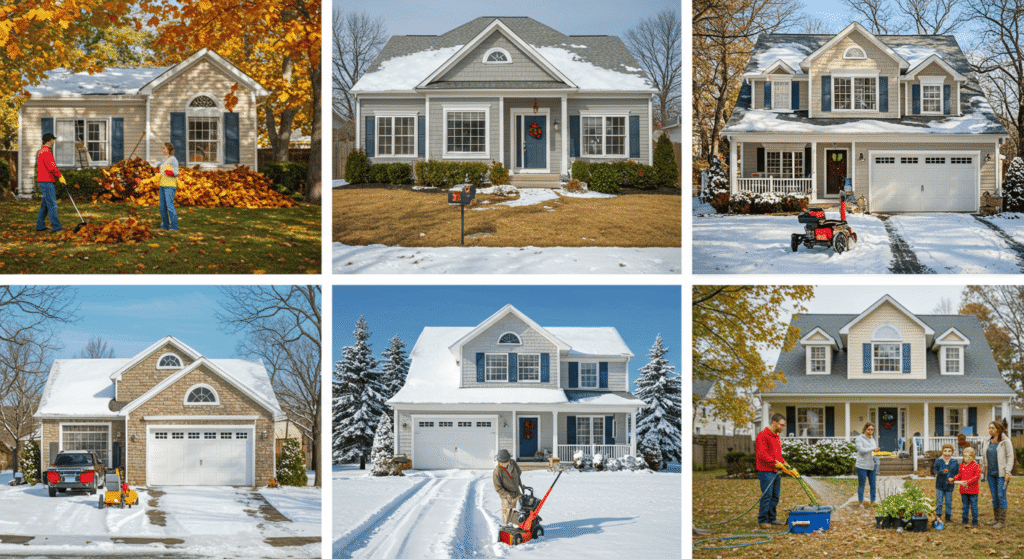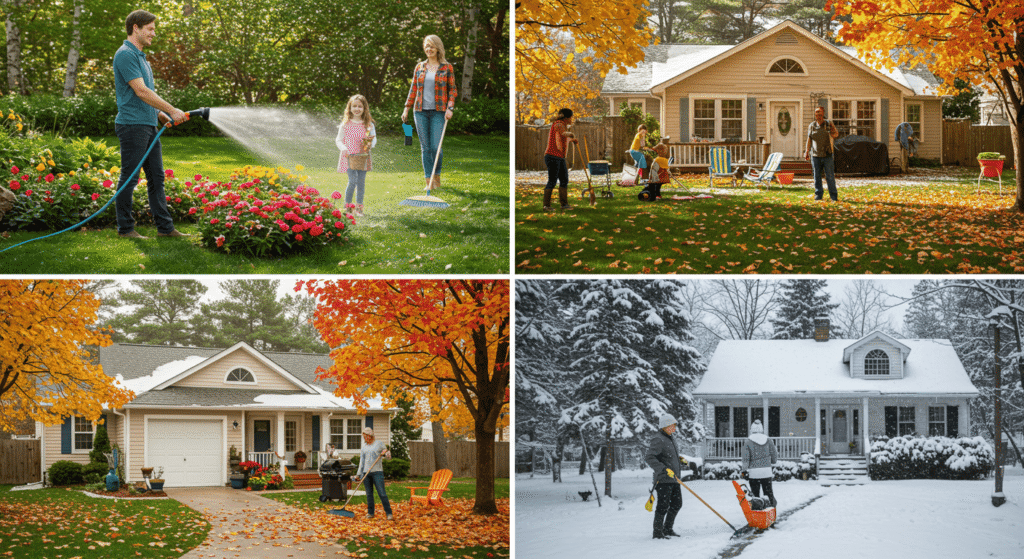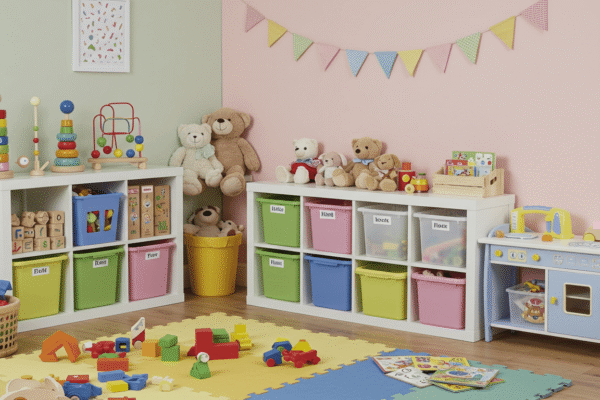Every home experiences the pressures of shifting weather patterns, and the impact of seasonal changes cannot be underestimated. From spring’s unpredictable rains to summer’s sweltering heat, autumn’s falling leaves, and winter’s freezing temperatures, your home faces different challenges with every turn of the calendar. Proactive homeowners know that success lies in preparation: evaluating what each season brings and taking strategic actions to prevent damage, improve efficiency, and ensure comfort. This article explores comprehensive, practical, and detailed steps for maintaining your home throughout all four seasons. With over 5000 words of strategies, examples, and actionable insights, you’ll find a complete roadmap to navigate seasonal changes successfully while enhancing safety, efficiency, and peace of mind.
Spring Home Maintenance for Seasonal Changes
Spring symbolizes renewal, making it one of the busiest seasons in home care. After enduring winter’s harsh winds, heavy snow, and low temperatures, homes need attention to repair damage and prepare for warmer, wetter months. This season introduces heavy rainfall, pollen, humidity, and rapid temperature changes. Smart preparation ensures your home transitions smoothly into the active months of growth and light. Here, we’ll break down crucial aspects of spring home maintenance.
Roof and Gutter Inspections
Your roof and gutters are your first line of defense against rainstorms and runoff. If left unchecked, winter’s ice and snow may have cracked tiles, dislodged gutters, or caused leaks. Neglecting these repairs in spring could leave your home vulnerable to leaks, mold, and foundational damage as seasonal changes expand rainfall volumes.
How to Inspect Roofs and Gutters Effectively
Start by visually inspecting your roof. Look for missing shingles, warped edges, or dark streaks that suggest water intrusion. For gutters, climb carefully with gloves and tools to remove accumulated debris like leaves or twigs. Flush water through the system to ensure it drains toward downspouts properly. Consider investing in gutter guards if heavy seasonal leaf fall is common. Professional inspections every two years are advisable in climates with extreme seasonal changes.
Indoor Air Quality and Allergen Control
Spring is also notorious for allergens. Pollen and dust accumulate in homes that were sealed tightly through winter, affecting indoor air quality and family health. As part of spring cleaning, dedicating time and care to indoor breathing spaces has benefits for long-term comfort.
Steps to Freshen Indoor Air
Replace HVAC and air purifier filters regularly. Open windows strategically on clear days to aerate interiors. Steam clean carpets, curtains, and upholstery, which often trap allergens. Installing HEPA filters brings relief for families sensitive to pollen. Improving ventilation early sets a positive tone for all subsequent seasonal changes.
Garden and Outdoor Revival
With warmer days ahead, spring provides the opportunity to revive your lawn and garden. Neglected gardens invite pests and reduce home value. Proper lawn care earlier in the growing season keeps maintenance simpler later.
Critical Garden Steps
Fertilize lawns, prune shrubs, and remove dead branches to stimulate vibrant growth. Add fresh soil or compost to vegetable plots. Consider planting flowers strategically to enhance curb appeal. These steps not only make your outdoor spaces attractive but also functional, preparing them to thrive through fluctuating seasonal changes.
Summer Home Maintenance for Seasonal Changes

Summer brings abundant energy, sunlight, and longer days. However, it also increases cooling demands, pest risks, heavy storms, and general wear caused by intense UV exposure. Preparing your home for summer ensures that indoor environments remain comfortable and efficient—and that outdoor systems stand up to sudden weather turns common during summer’s volatile seasonal changes.
Optimizing Cooling Systems
Summer comfort in many regions hinges on effective cooling. Inefficient systems not only strain your finances but also risk breakdown during peak usage. Addressing these challenges early is crucial.
Practical Cooling Awareness
Schedule air conditioning servicing with professionals before the season peaks. Replace or clean air filters monthly to improve circulation. Check ductwork for leaks—a common source of wasted cooling. Install programmable thermostats to automatically reduce cooling when away. These adjustments mitigate burdens during summer seasonal changes.
Pest Control and Prevention
Summer’s warmth accelerates insect life cycles, leading to mosquito swarms, ant invasions, and termite threats. Without prevention, infestations could disrupt comfort and even compromise a home’s structure.
Pest-Proofing Strategies
Reduce standing water outdoors (gutters, birdbaths), where mosquitoes breed. Seal cracks in foundations to block ants and termites. Store food properly and maintain waste management routines to avoid attracting pests. Professional inspections can reduce risk, particularly in areas with pronounced seasonal changes affecting insect populations.
Managing Summer Storms
Storms and hurricanes, especially in coastal regions, are another summer reality. These events often come with little warning and can devastate homes ill-prepared for the forces of nature.
Storm-Proof Home Tips
Anchor outdoor items to prevent storm winds from turning them into projectiles. Retrofit windows with storm shutters in vulnerable areas. Inside, unplug critical electronics to defend against surges. Test sump pumps to fend off flooding. These practices safeguard property through unpredictable seasonal changes.
Fall Home Maintenance for Seasonal Changes
Fall is both a reflective time and a proactive maintenance season. The drop in temperature, shorter days, and leaf fall prepare the land for dormancy—but homeowners must take steps to prepare interiors and exteriors before freezing sets in. By addressing repairs now, you minimize midwinter emergencies caused by overlooked seasonal changes.
Outdoor and Garden Prep
Gardens need protection to survive the coming frost. Fallen leaves, though beautiful, block drainage and harm lawns without intervention.
Essential Fall Gardening Tips
Gather and compost fallen leaves weekly. Protect plants with mulch to retain soil warmth. Prune trees to avoid compromised branches snapping under snow. Drain garden hoses and store them to prevent bursts. This maintenance helps manage seamless seasonal changes into winter.
Heating System Testing
While mild in early months, fall eventually demands heating. Faulty systems left untested create severe risks once temperatures drastically fall.
Heating Maintenance Guide
Have professionals examine your furnace. Replace old filters and clean vents. Test thermostats against portable thermometers for accuracy. Clean chimneys if wood stoves are frequently used. Ensuring heating readiness supports indoor safety during cold seasonal changes.
Insulating for the Cold
Fall is the optimal time to seal cracks and address insulation. Energy bills and comfort hinge directly on how well homes resist heat loss.
Insulation Steps
Apply caulking or weatherstrips around drafty windows and doors. Lay additional insulation in attics and basements. Install storm doors or double glazing for improved thermal control. Improved insulation keeps energy efficiency intact across seasonal changes.
Winter Home Maintenance for Seasonal Changes

Winter is a season of testing endurance. Cold, snow, and ice strain systems and create risks if left unmanaged. Taking measures to prepare safeguards your home and minimizes costly winter emergencies caused by harsh seasonal changes.
Pipe Protection
Frozen pipes expand and burst, resulting in water damage and repair expenses.
Protecting Plumbing
Insulate pipes in basements and attics. Keep thermostats at steady levels, even when away. Allow faucets to drip slightly during extreme conditions. Heat tape systems add additional protection. Reliable plumbing preparations counteract severe seasonal changes.
Snow and Ice Management
Snow accumulation not only creates mobility hazards but also exerts pressure on roofs and gutters.
Safe Snow Removal
Shovel regularly to prevent ice from compacting. Use eco-friendly salt substitutes to avoid harming pets or concrete. Remove roof snow with rakes to prevent collapse or ice dams. Systematic snow management is critical throughout winter seasonal changes.
Indoor Comfort and Fire Safety
With more time spent indoors in winter, ensuring comfort and safety protects well-being during long, dark months.
Fire Safety Checks
Inspect smoke alarms and carbon monoxide detectors monthly. Keep fire extinguishers accessible. Never overload circuits with heating devices. Ensuring indoor safety guarantees peace of mind as winter seasonal changes bear down.
Year-Round Safety Essentials
Some home care strategies should be maintained regardless of the calendar. These continuous tasks sustain safety, efficiency, and well-being during all seasonal changes.
Detector and Alarm Systems
These devices play lifesaving roles. Systems must work year-round to warn of risks invisible to human senses.
Maintenance and Placement
Test alarms once a month and replace batteries twice yearly. Install in sleeping areas and every home level. Replace units every decade. Vigilance ensures resilience across seasonal changes.
Emergency Preparedness
Storms, outages, or sudden weather swings can arise year-round. Having emergency resources ready provides safety nets.
Building an Emergency Kit
Stock canned food, water, batteries, and medical supplies. Keep flashlights and blankets on-hand. Rotate expired goods. Preparedness ensures survival during unpredictable seasonal changes.
Energy Efficiency Tips

As energy use surges during both heating and cooling seasons, maximizing efficiency is vital.
Smart Technology Systems
Adapt modern solutions to optimize home operations automatically.
Efficiency Advancements
Install smart thermostats to program usage around family schedules. Use motion sensor lighting. Adopt apps to track real-time consumption. Smart systems save money and adapt to seasonal changes.
Insulation Improvements
One of the most impactful upgrades remains insulation. Better insulation manages energy use on both extremes of weather.
Practical Insulation Upgrades
Add insulation to weak spots, improve glazing on windows, and upgrade worn weatherstripping. Practical changes today reduce longer-term bills, alleviating impacts of seasonal changes.
Deep Cleaning as Seasonal Routine
Cleaning routines tie closely with calendar rhythms. Each season requires renewed dedication to cleaning practices to complement comfort and durability.
Decluttering Habits
Please note that decluttering clears mental and physical space for productivity and efficiency.
Decluttering Strategy
Adopt seasonal purges of unused items. Organize closets by seasonality. Donate unneeded clothes or goods. Cleaning up empowers households to adapt seamlessly across seasonal changes.
Appliance and System Cleaning
Regular cleaning extends life and efficiency of appliances which endure seasonal stressors.
Guidelines for Systematic Cleaning
Clean refrigerator coils, flush water heaters, and clear dryer lint. Detailed cleaning reduces risks and enhances function through ongoing seasonal changes.
Exterior Preservation Practices

The exterior stands as the frontline against climate. Regular checks and protections ensure that outside structures resist seasonal changes effectively.
Walkway and Driveway Care
Freeze-thaw cycles impact concrete surfaces and risk tripping hazards.
Repairs and Protection
Seal cracks annually. Remove plants growing in driveway edges. Apply protective sealant layers. Durable outdoor paths withstand year-round seasonal changes.
Exterior Walls and Paint Care
Painted siding guards against UV, rain, and frost damage alike.
Maintenance Practices
Inspect paint annually, repaint as needed, and fill cracks quickly. Weather-resistant paints hold up better against repeated seasonal changes challenges.
Conclusion: Adapting Proactively to Seasonal Changes
A home flourishes with preparation, not reaction. Tackling maintenance systematically across seasons prevents emergencies while safeguarding investments and family health. As each seasonal change brings new challenges, consistency in preparation ensures steady comfort. By mastering proactive strategies, you control your environment rather than letting weather dictate it. For more timeless home living tips, read our extended advice at Amelia’s Tips. For nationwide guidelines on energy management, check Energy.gov. Strong preparation equals strong peace of mind. Your home’s readiness reflects your resilience against nature’s reliable cycles.












